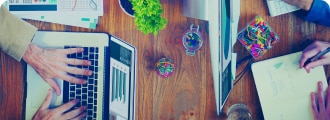The State of the Real Estate Crowdfunding Industry
This article is based on a conversation Adam Gower had with Tore Steen, CEO of Crowdstreet about the findings of Adam's new book, UNLEASHED. including about CrowdStreet's emergence as the industy's leading crowdfunding platform. Watch the entire conversation with Tore here.
The advent of commercial real estate crowdfunding in 2014 was initially slow to take off. Many people wondered whether online marketplaces were legitimate. Others questioned the quality of sponsors, deals and investors turning to these platforms. It took several years for platforms like CrowdStreet to gain traction, but by 2018, there had been enough deals to close to indicate viability.
A big question remained: how would these platforms fare during a recession? Would commercial real estate crowdfunding simply be a passing fad? When other sources of capital dried up, would sponsors be able to use these platforms to raise capital instead?
While there had been some signs of the market softening prior to 2020, the COVID-19 pandemic was a shock to the CRE market unlike any experts could have predicted.
The uncertainties associated with the pandemic put nearly all deal flow on pause, at least temporarily.
The question was: how would CRE platforms like CrowdStreet adapt and respond? As you will see, this was a defining moment that ultimately allowed CrowdStreet to become the market leader heading into 2021.
The Early Days: Making the Sales Pitch to Sponsors
Early on, CRE crowdfunding platforms faced an interesting chicken-or-the-egg dynamic. Should they be targeting sponsors? Or should they be going after investors?
Convincing investors to utilize an online marketplace like CrowdStreet was, in theory, easier than convincing sponsors to leverage these platforms. Investors routinely cited the need to diversify their portfolios, and there was a lot of pent-up demand for institutional-quality real estate assets to which retail investors historically had not had access. Given the opportunity to invest with the nation’s leading sponsors, the online marketplaces felt people would.
But they first needed to bring high-quality product online, and that required a significant educational push among sponsors.
The focus between 2014 and 2016 became on real estate sponsors, developers, and operators. CrowdStreet set out to convince them that a) this is indeed a legal way of raising capital, and b) this is an efficient way to raise capital.
During these early days, many sponsors did not realize that Title II of the JOBS Act and Reg. D 506(c) made online crowdfunding a legal way to raise capital. They were now allowed to engage in general solicitation for their deals, something that had been prohibited under prior SEC regulations. CrowdStreet launched a full court press to help key decision-makers understand the legality of utilizing an online marketplace for raising capital.
These early efforts, focused almost exclusively on educating sponsors, paid off.
Between 2017 and 2018, CrowdStreet experienced a 78 percent increase in capital raised, increasing from $142 million in 2017 to $254 million in 2018. By the end of 2018, some of the nation’s leading sponsors were utilizing CrowdStreet as a tool for raising capital—perhaps not exclusively, but in some part within the context of a larger capital formation strategy. They were finding that, indeed, online crowdfunding platforms like CrowdStreet can be a highly efficient way to raise capital from a national—even global—audience of investors.
Retail Investors Become Unleashed
At the same time, there was significant pent-up demand from retail investors who were looking to diversify their portfolios, but until recently, did not have many pathways for participating in alternative investments. They were limited to stocks, bonds, and other publicly traded assets.
Now, suddenly they had access.
To be sure, CrowdStreet could not just flip a switch and expect people to start investing in droves. They first needed to educate investors, just as they had educated sponsors. CrowdStreet worked to communicate its value proposition, much like an e-commerce brand has to invest in marketing and sales prior to attracting customers. A lot of CrowdStreet’s early efforts to this end included publishing content to help investors understand the nuances of CRE, like the difference between cap rates and IRR, and what to consider when investing in deals.
When Institutional Capital Pumps the Breaks, Crowdfunding Goes Full Throttle
One of the reasons CrowdStreet has been so successful as of late is that it was able to build its track record since opening up in 2014. By 2020, they had plenty of deals close that showed the platform’s record of success. When the pandemic hit early that year, and traditional sources of commercial real estate capital dried up, CrowdStreet was able to position itself as a viable alternative for those looking to raise money for their deals.
CrowdStreet proved especially effective for sponsors who needed to raise capital quickly. During the first half of 2020, most CRE lenders put a pause on all lending until they had a better understanding of how the pandemic would impact the economy. Some sponsors were not able to simply “sit tight,” they needed capital and they needed it now.
Many sponsors who had been following CrowdStreet activity until 2020 finally decided that there had been enough crowdfunding R&D at this point. They were finally ready to launch a campaign of their own, if for no other reason than they had limited to no other options during the pandemic when in-person meetings and the traditional ways of raising capital were no longer feasible.
Amid Uncertainty, People Become Eager for Information
Experts may have warned about a CRE softening in mid- to late-2020, but nobody expected or was prepared for a global pandemic. The pandemic created such widespread uncertainty for sponsors and investors alike. People became desperate for information—anything that could provide some certainty amid the complete unknown.
When the pandemic first hit, the natural response was to pause all transaction activity.
Major banks stopped lending. CrowdStreet fared no differently. Deal volume ground to a halt for a solid six to eight weeks beginning in March 2020.
CrowdStreet used this opportunity to position itself as a trusted resource for the CRE community. They doubled down on their content strategy during this time, tapping industry experts for livestream events where the public had unprecedented access to knowledge and information.
Experts, including the head of BlackRock and Director of Research at Nuveen, participated in conversations in which they shared real-time data on what was happening on the ground. These events were not meant to be a sales pitch. Instead, CrowdStreet was simply acting as a resource for those trying to make sense for how the pandemic was impacting the sector.
Many of those who participated in these events would ultimately convert to investors in the months to come once the dust started to settle.
Online Crowdfunding Platforms Prove Nimble and Able to Adapt
Unlike traditional lenders, institutional investors and other capital providers—most of which have long due diligence and underwriting processes and must stop to rebalance overall portfolios—the nature of CrowdStreet’s online infrastructure allowed it to adapt quickly to changing market conditions.
When the pandemic hit and deals hit pause, CrowdStreet was able to quickly assess what product types would do well during the pandemic (and which would not). For example, industrial and data center deals were suddenly more attractive than ever before versus hotels and brick-and-mortar retail projects. While other capital providers froze, CrowdStreet simply adapted its offerings and focused on those that would be most viable if launching mid-pandemic.
Mid-2020 Launch of New Deals Highlights Investors’ Confidence in Crowdfunding
One of the primary indicators that real estate sponsors truly believed in the viability of crowdfunding as an alternative capital raising strategy came in mid-2020. At a time when most sponsors and capital providers were in a holding pattern, several sponsors approached CrowdStreet for the first time.
These sponsors came forward with deals that they wanted to launch in June or July of 2020. The conversations being had were not about whether these deals were viable post-recession. Instead, investors showed eagerness to launch immediately—despite the pandemic and related economic uncertainties.
These investors felt that, absent other sources of traditional capital, crowdfunding was truly the most viable alternative.
As it turns out, many of these deals were in fact great investment opportunities. They were just stuck in limbo because the debt markets had tightened up. As soon as the debt markets started to unlock a bit that summer, these crowdfunding campaigns were able to take off. Sponsors typically have their debt lined up prior to equity, so the easing of the debt markets unleashed a wave of crowdfunding campaigns in the months that followed.
The Shift to “Online Everything” Gives Sponsors Comfort with Digital Platform
The pandemic forced many people to go fully remote for the first time. Business meetings, luncheons, “coffee” dates, public hearings—you name it, nearly all went virtual during the pandemic. As people were forced to go online in new ways for different purposes, they became more adept at using technology. After a few months, people seemed generally comfortable with using the technology that enabled these meetings and events to occur.
With more business being conducted online, people were spending more time behind their screens, using their devices to consume media and information. CrowdStreet responded by putting out a wealth of content and information for sponsors to consume, and in doing so, helped people become more comfortable with the notion of raising capital exclusively online, as well.
In fact, this sudden comfort with raising capital online forced CrowdStreet to carefully monitor their deal pipeline because they were suddenly at risk of bringing too much deal supply online at once—another key indicator of how popular the platform had become mid-recession.
COVID Volatility Creates Urgency for Retail Investors to Diversify
Historically, as mentioned above, retail investors were limited in terms of their options to diversify their portfolios. Most only had access to stocks, bonds, and other traditional equity markets. Alternative investments, like commercial real estate, always had notoriously high barriers to entry.
The advent of online crowdfunding ushered in new era.
While crowdfunding had been available for several years by the time the pandemic hit, many individual investors had not yet explored crowdfunding in earnest. Then, when the pandemic caused wild market volatility (at one point, the Dow dropped 10,000 points in a single day), investors finally confronted their need to diversify by adding alternatives to their portfolios. Many of these investors turned to commercial real estate, and more specifically, to CrowdStreet.
It seemed like, almost overnight, investors were putting 10 to 20 percent of their allocations in alternatives. By mid-summer 2020, still at the height of Covid, the deals that were launching on CrowdStreet were becoming oversubscribed—not just in days, but often in hours or even minutes.
CrowdStreet’s “Secondary Market” Investment Thesis Comes to Bear
One of CrowdStreet’s primary investment theses relates to the strength of the secondary markets. They have intentionally focused on attracting sponsors with deals in cities like Nashville, Austin, Charlotte and Miami instead of primary market cities like New York or San Francisco. These secondary markets, CrowdStreet posited, were growth markets that could generate tremendous returns for investors.
When the pandemic hit, this secondary market investment thesis came to bear.
CrowdStreet continued to hone in on these markets, particularly for development deals which can take 12 to 18 months to complete. Sponsors with deals in secondary markets found a captive audience of investors during the pandemic, as people started to realize that by the time the pandemic is under control, these projects will be coming online and it will be boom time in those markets.
Secondary markets continue their upward trajectory, especially now that more workers have gained the freedom and flexibility to work remotely—perhaps indefinitely. The need to be in primary markets is being waylaid and in turn, secondary markets are expected to continue growing with rapid speed. CrowdStreet planned for this trend, even pre-pandemic, and has reaped the rewards as a result.
Crowdfunding: A Counter-Recessionary Phenomenon
The CrowdStreet experience over the past 15 months highlights how powerful online crowdfunding can be for those looking to raise capital for their commercial real estate deals. It shows how online crowdfunding marketplaces are well positioned not only to survive economic recessions, but to thrive during these times.
There are several reasons for this, many of which are discussed above. To recap, crowdfunding sites like CrowdStreet are rooted in technology, which allows them to be nimble and pivot easily amid changing market conditions. These platforms can adjust their strategies in real-time, shifting focus from institutional investors to retail investors, and vice versa, if one subset of investors becomes more risk-adverse than the others.
This nimbleness provides sponsors with the greatest visibility among investors of all kinds, in all geographies, which helps them to raise capital faster and more efficiently than they could using traditional means.
Crowdfunding Proves Viable Even for the Largest of Deals
Between 2014 and 2017, most deals featured on CrowdStreet were in the $15m- $30m range (and accordingly, were generally looking to raise less than $10 million each). The investors using the platform at this point were those who would otherwise be lining up “country club capital” from friends and family.
As the platform grows in popularity, deal sizes dramatically increase.
Today, sponsors are using the platform to raise capital for significantly larger projects. It is not uncommon to see deals in the $50m-$100m range, with a recent deal exceeding $200 million. Sponsors who would have historically gone to an institutional investor for a single, lump-sum investment are now using CrowdStreet to raise capital instead.
Pivoting Away From Institutional Capital
Many sponsors are finding that raising capital from retail investors, even hundreds of retail investors at a time, can be as efficient as raising capital from institutional investors. Raising capital from either type of investor still requires work. But rather than getting on a plane to have in-person meetings with institutional investors and their boards of directors, a sponsor can take that time to connect (online) with individual investors (and from home or office).
There are many benefits to this approach, as well.
Specifically, most seasoned sponsors know that institutional capital often comes with strings attached. Institutional investors, since they are making such large investments, understandably want to have a more vocal role in the direction of a deal. This can limit the sponsor’s decision-making authority, for better or worse.
Alternatively, when raising money from individual investors on a platform like CrowdStreet, the sponsor is accepting investments from passive investors—people who understand that their $20,000 or $100,000 investment does not earn them any voting rights or general say in how the deal is managed. In turn, sponsors do not have to give up total control like they would if taking a single check from an institution. That is a significant benefit to sponsors using an online marketplace.
Crowdfunding Continues to Grow in Popularity as the Economy Improves
Crowdfunding took off with tremendous speed during the pandemic, particularly as the traditional debt and equity markets dried up, and it shows no signs of slowing down now that the economy is improving.
Whereas the first half of 2020 was riddled with uncertainty, the latter half of 2020 ushered in more stability: the November election ended months of speculation, a multi-trillion dollar stimulus package helped to strengthen the economy, and positive news of vaccine efficacy sent the markets skyrocketing.
One might think that if crowdfunding were popular during the depths of a recession, it’s popularity would scale back as the economy improves, but indeed, the opposite seems to be true.
As more people have realized the power of online crowdfunding, more sponsors are using it as part of their larger capital formation strategy and investors, in search of compelling deals, are following suit.
CrowdStreet data bear this out: in December 2020, sponsors raised $120 million on the marketplace. That is the equivalent to almost all of the capital raised on the platform in 2017, in one month alone.
CRE Crowdfunding: The Best is Yet to Come
CrowdStreet may have had a banner year in 2020, but arguably, the best is still yet to come.
The caliber of sponsors continues to increase. CrowdStreet categorizes sponsors as “emerging,” “seasoned,” “tenured,” and “enterprise.” Three years ago, only 20 percent of the deals were spearheaded by tenured and enterprise sponsors. Today, more than 60 percent of deals are being offered by these highly experienced sponsors.
As the caliber of sponsors and deals increases, so will the number of investors and accordingly, the amount of capital raised using this vehicle.
Last year, CrowdStreet exited about $640 million worth of invested capital. In 2021, they are on pace to exit more than a billion dollars’ worth of deals.
An estimated 25 percent of all real estate private equity capital is now raised using online crowdfunding—Crowdstreet accounting for a disproportionate share of that total.
CONCLUSION
Commercial real estate crowdfunding is now beyond its nascency. Sponsors no longer need convincing that it is a viable alternative for raising capital; it has been proven. Instead, sponsors are starting to recognize that crowdfunding is a critical component of capital formation that should be added to their repertoire.
Accordingly, the demand side is taking off.
The financial community is starting to lean into this and today, registered investment and other wealth advisors—who collectively control billions (if not trillions) of dollars—are turning to CRE crowdfunding in droves.
Within the next five to ten years, it is possible that crowdfunding portals like CrowdStreet will actually become the preferred method of raising capital. This shift is already shaking up the commercial real estate capital markets and will continue to do so in the months and years to come.
Access the entire conversation with Tore Steen, Founder & CEO of CrowdStreet here.
If you liked this article and would like to learn more about raising capital for real estate investing, check out some of the resources below:
If you have only just started in real estate development, have completed no deals, have no email list, but know you want the freedom and wealth being a real estate developer brings, then I suggest your first step is to start evaluating deals so you can recognize a good one when you see it.
Here’s where you should start. You’ll learn everything you need to know – the different types of real estate, different development strategies, how real estate cycles influence the market, and all about due diligence.
If you want to find deals and raise money for them so you can start your real estate development business, then learning how to conduct due diligence so you can pitch your deals better to investors is a great place to start.
If you’ve already purchased one or more real estate project and are seeing more opportunities than you can finance, then now is the time to start building your investor network so you can finance all your next deals quicker.
You’ve already got some momentum; now start finding and educating prospects about what you’re doing so you can build an email list of people to pitch to when you’re ready to raise money for your next deal.
This is what we build for private clients all the time – it’s called the Investor Acquisition System and you can access the entire program right here so you can find prospects, and convert them into being deep pocketed, repeat investors in your deals.
If you are a seasoned pro with multi-cycle experience, a substantial portfolio, a decent deal pipeline, and find yourself spending too much time raising equity capital because you’re still doing it in-person, then it’s time you put technology to work for you.
The wonderful thing about doing this is that you’re not going to be doing anything different than you’re already doing and, guess what, you’ll never have to sit through investor meetings again.
Sounds crazy I know, but I lay the whole thing out for you in this white board workshop where I personally show you exactly what it takes for you to transform your equity raising into a fully automated, capital raising machine so you can find new investors while increasing commitments from your existing network.
RELATED ARTICLES





